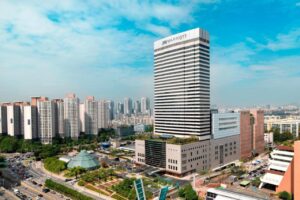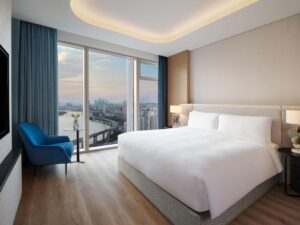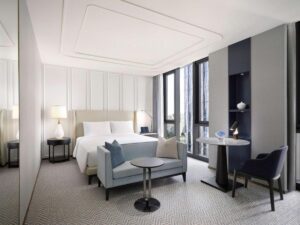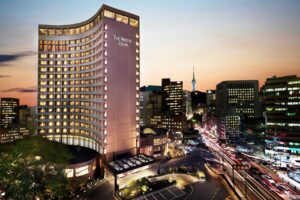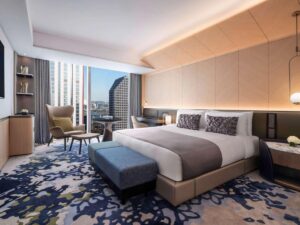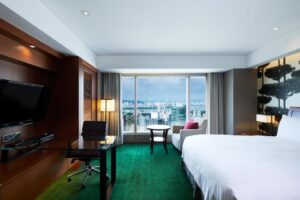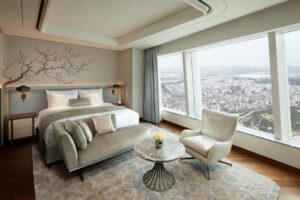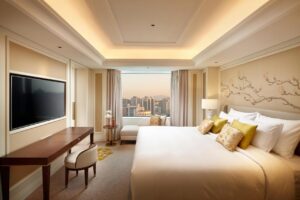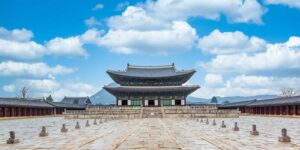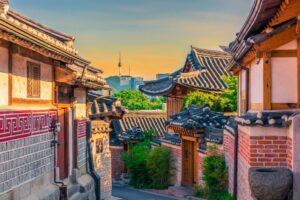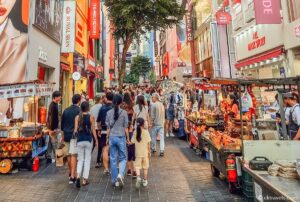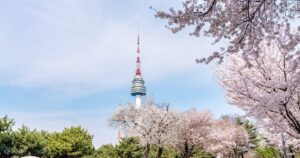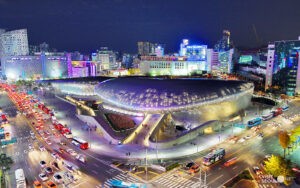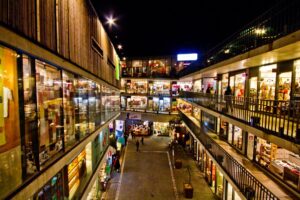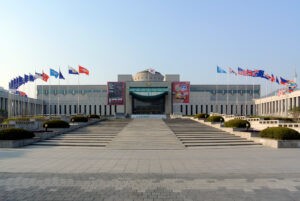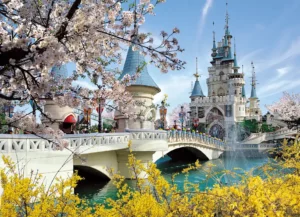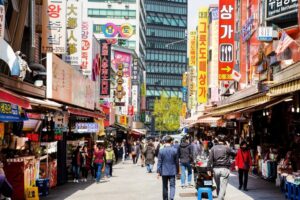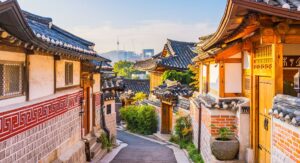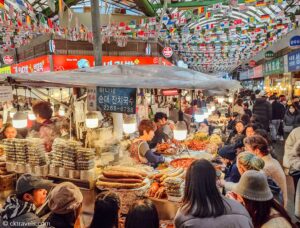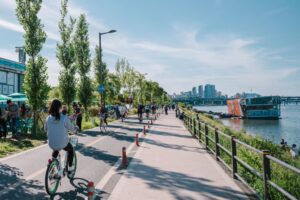Traveling to Seoul offers a unique blend of ancient tradition and cutting-edge modernity, making it a captivating destination for any traveler. As the bustling capital of South Korea, Seoul is a city where centuries-old palaces and temples stand alongside towering skyscrapers and neon-lit streets. Visitors can explore the grandeur of Gyeongbokgung Palace, witness the solemnity of the DMZ, and wander through the historic Bukchon Hanok Village with its beautifully preserved traditional houses. The city’s vibrant cultural scene is evident in its extensive arts, music, and film festivals, as well as its dynamic culinary landscape that ranges from street food stalls selling delectable Korean snacks like tteokbokki and hotteok, to Michelin-starred restaurants offering innovative dishes. Shopping enthusiasts will delight in the bustling markets of Myeongdong and the stylish boutiques in Gangnam, while nature lovers can hike the scenic trails of Bukhansan National Park, located within the city limits. Furthermore, Seoul’s efficient public transportation makes it easy to explore all these attractions. The city’s blend of history, culture, cuisine, and contemporary life provides an endlessly fascinating experience that caters to a wide range of interests and tastes.
Best Time To Visit Seoul in 2025
The best time to visit Seoul is during the spring (April to June) and autumn (September to November) seasons. These months offer mild and pleasant weather, making it ideal for exploring the city’s outdoor attractions and vibrant street life. Spring in Seoul is particularly magical, as the city bursts into bloom with cherry blossoms and other flowers, creating picturesque scenes at every turn, especially around the Han River and in parks like Yeouido Park. Autumn is equally beautiful, characterized by crisp air and vibrant foliage that transforms the cityscape into shades of gold, orange, and red. These seasons also host a variety of cultural festivals, such as the Seoul Lantern Festival in November and the Hi Seoul Festival in spring, providing visitors with a rich experience of Korean culture and heritage. Additionally, these periods avoid the sweltering heat and humidity of the summer and the bitter cold of the winter, offering the most comfortable conditions for a full exploration of Seoul.
The 8 Best Hotels in Seoul 2025
2. Hotel Naru Seoul MGallery Ambassador
3. Sofitel Ambassador Seoul Hotel & Serviced Residences
6. InterContinental Seoul COEX, an IHG Hotel
Top-Rated Tourist Attractions & Sights in Seoul
The largest of the Five Grand Palaces built during the Joseon Dynasty, known for its beautiful architecture and the changing of the guard ceremony.
A traditional Korean village located in the heart of Seoul, offering a glimpse into the country’s historical architecture and lifestyle.
A bustling retail hub known for its trendy fashion, beauty shops, and street food vendors that serve local delicacies.
Located on Namsan Mountain, the tower offers panoramic views of Seoul’s skyline, particularly stunning at night.
❖ Dongdaemun Design Plaza (DDP)
A major urban development landmark designed by Zaha Hadid, known for its distinctive neo-futuristic architecture and a hub for fashion, design, and exhibitions.
❖ Insadong
A district that represents the focal point of Korean traditional culture and crafts, including art galleries, traditional tea houses, and shops selling antiques and local crafts.
Dedicated to the military history of Korea, this museum houses extensive records and exhibits related to the Korean War and other conflicts.
Recreation complex featuring the world’s largest indoor theme park, an outdoor amusement park called “Magic Island,” shopping malls, a luxury hotel, and a Korean folk museum. This entertainment hub is known for its thrilling rides, ice rink, and diverse family attractions.
As the largest traditional market in Korea, Namdaemun offers a vast range of goods at reasonable prices and is a great spot for those looking to experience local life and find everything from clothes to kitchenware.
A large green space in Seoul, it combines nature with art installations and houses diverse attractions including a deer park, an insect garden, and children’s play areas.
Nestled at the base of Namsan Mountain, this village features restored traditional Korean houses (hanoks) from the Joseon Dynasty and offers cultural experiences like tea ceremonies and traditional games.
Known for its vintage clothing shops and vibrant food alley, Gwangjang Market is one of Seoul’s oldest and largest markets, famous for traditional Korean street food like bindaetteok and bibimbap.
A picturesque riverside park in Seoul’s main financial district, ideal for picnics, bike rides, and leisurely walks, with beautiful cherry blossoms in spring and festivals throughout the year.
Ranked among the top airports globally, Incheon Airport is noted for its efficiency, advanced facilities, and a range of amenities including a spa, ice skating rink, and a Korean culture museum.
